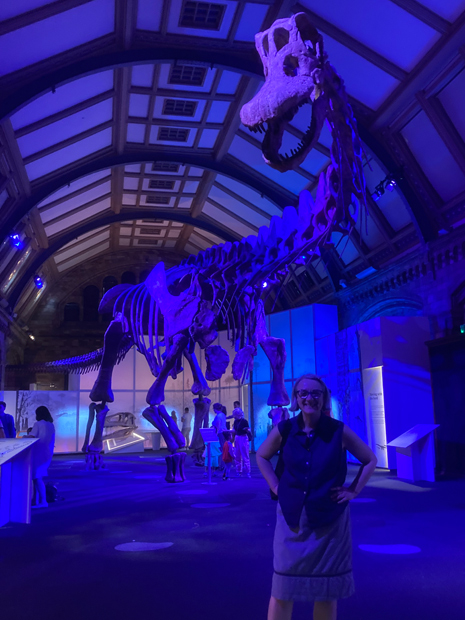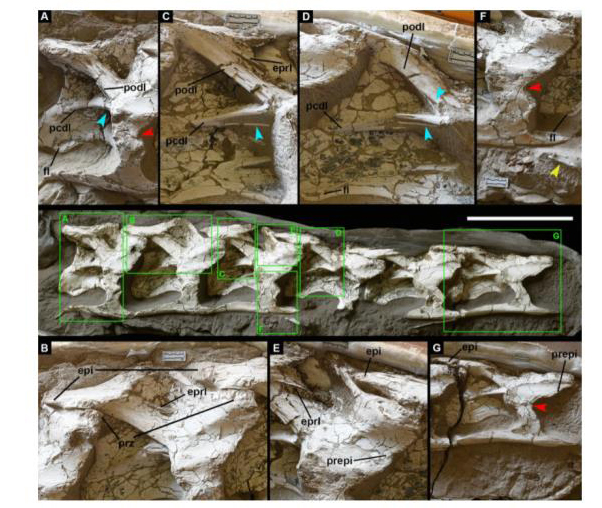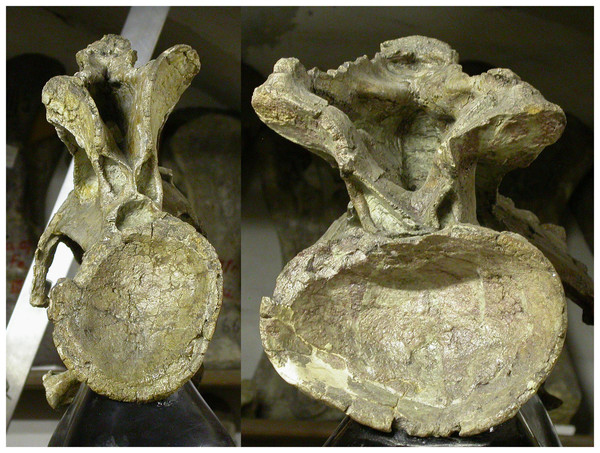The Sauropodomorpha consists of the long-necked sauropods and their ancestors. This clade contains many of the most famous and popular dinosaurs – Brontosaurus, Diplodocus, Brachiosaurus, Mamenchisaurus and Argentinosaurus. Casts of these huge dinosaurs, some of which represent the biggest terrestrial animals known to science, dominate the halls and exhibition spaces of the world’s natural history museums. “Dippy” the Diplodocus, the famous plaster cast of Diplodocus carnegii (specimen number CM 84), arguably one of the most easily recognised of all museum exhibits, in common with just about every other sauropod neck on display, might be hiding a surprising and unpalatable truth.
It seems that palaeontologists don’t know that much about the necks of these long-necked herbivores.
That is the conclusion made in a paper published this month.

Picture credit: Everything Dinosaur
Not All is What it Seems
Writing in the on-line, open access journal “PeerJ”, Mike Taylor, an honorary research associate at the University of Bristol and renowned sauropod expert, concludes that all those beautifully displayed sauropod specimens in museums are in essence, misleading. The anatomy of the necks of these iconic dinosaurs is much less well known than is often assumed.
Very few complete sauropod necks have been scientifically described and famous specimens such as the Berlin brachiosaur have been constructed based on an incomplete and often substantially distorted cervical vertebrae sequence.

Picture credit: Everything Dinosaur
Surprisingly, given the number of sauropod specimens reconstructed for display in museums, few complete necks have been described in the literature. The paper lists nine fossil specimens with unambiguously complete necks, each of them articulated and known to include the bone at the base of the neck that lies in association with the first dorsal vertebra. The author also lists additional sauropod specimens thought to have complete necks but have yet to be fully described.
The paper describes yet more sauropod necks which are probably complete but are missing the first cervical (atlas bone). The first cervical is often much smaller than the other neck bones and easily lost during fossilisation along with the skull.

Very Little Information on Diplodocid Necks
In older museum reconstructions, missing bone is often difficult to identify as the restorers were tasked with making the fossil specimen look more complete. Furthermore, even those cervical vertebrae that are complete are often badly distorted due to taphonomic processes (crushed or distorted during fossilisation), so attempts to understand the anatomy of the neck, the posture of the head and the range of motion in the neck are severely hampered.
Famous dinosaurs such as Apatosaurus and Diplodocus are barely represented in terms of complete neck fossils. Outlining the size of the problem, author Mike Taylor commented that in December 2021 the Paleobiologiy Database listed a total of 342 sauropod species. Of these, only nine had unambiguously complete and articulated necks. Only one in every thirty-eight sauropod species named (2.6%) had a complete set of cervical vertebrae that had been scientifically described.

A Need to Acknowledge the Ambiguity
Palaeontologists remain uncertain about how many neck bones famous sauropods such as Diplodocus and Giraffatitan had. The fossil record of cervical vertebrae of sauropods is poor and it is important that researchers acknowledge this paucity. The author of the paper cautions against blithely asserting “facts” about sauropod necks without the caveat of acknowledging the lack of evidence to support hypotheses.
Michael Taylor asserts that the presence of a partial fossil record on cervical vertebrae is not too onerous, but it is important to properly acknowledge the degree of uncertainty that surrounds studies. He cautions against drawing firm conclusions about sauropod neck posture and other aspects of sauropod neck anatomy based on limited data.
The scientific paper: “Almost all known sauropod necks are incomplete and distorted” by Michael P. Taylor published in PeerJ.






Leave A Comment